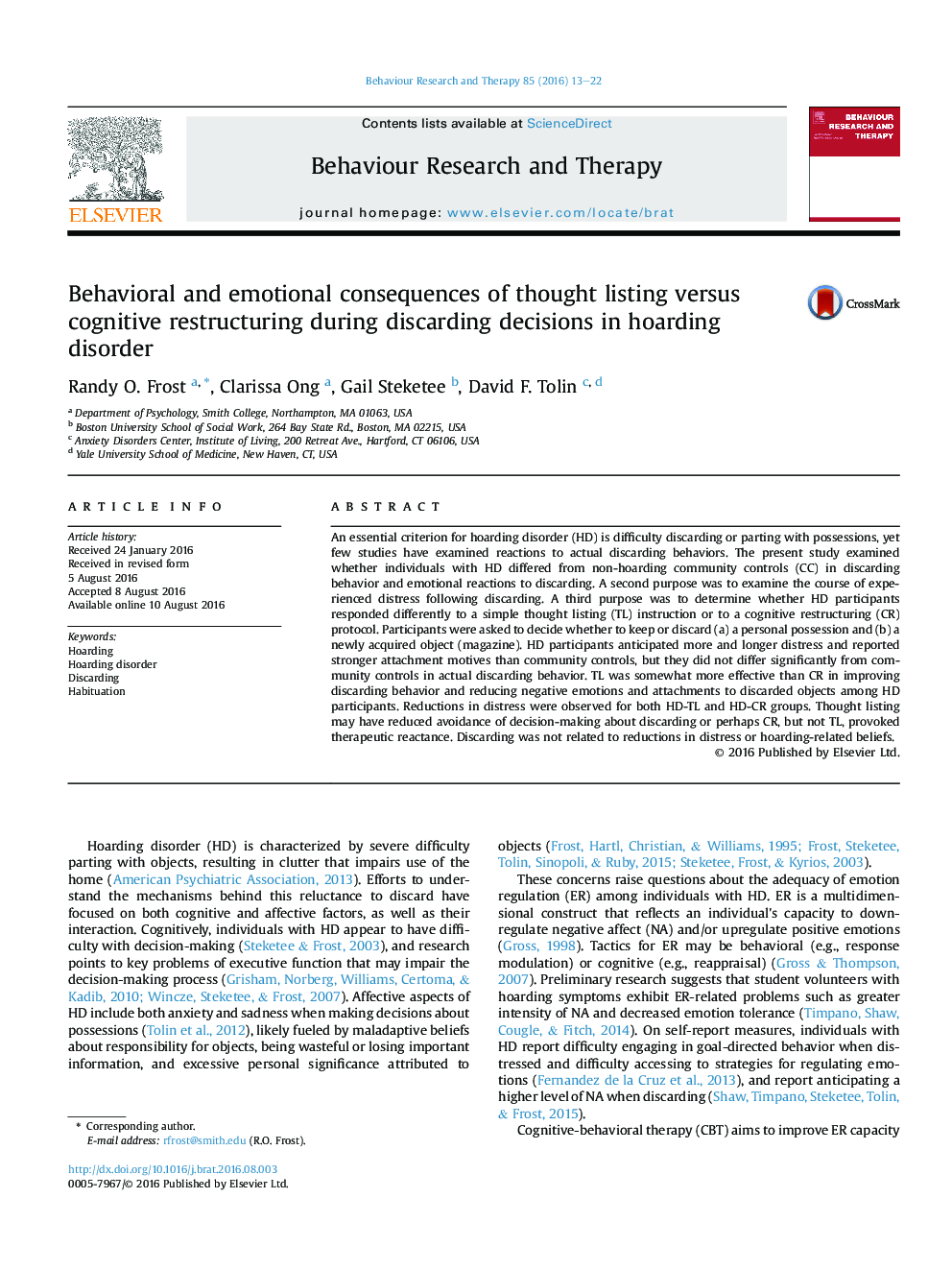| Article ID | Journal | Published Year | Pages | File Type |
|---|---|---|---|---|
| 901752 | Behaviour Research and Therapy | 2016 | 10 Pages |
•People with hoarding disorder (HD) report more and longer distress and attachment motives than community controls.•Thought listing was more effective than cognitive restructuring in reducing negative emotions and attachments.•Thought listing improved discarding behavior compared to cognitive restructuring.
An essential criterion for hoarding disorder (HD) is difficulty discarding or parting with possessions, yet few studies have examined reactions to actual discarding behaviors. The present study examined whether individuals with HD differed from non-hoarding community controls (CC) in discarding behavior and emotional reactions to discarding. A second purpose was to examine the course of experienced distress following discarding. A third purpose was to determine whether HD participants responded differently to a simple thought listing (TL) instruction or to a cognitive restructuring (CR) protocol. Participants were asked to decide whether to keep or discard (a) a personal possession and (b) a newly acquired object (magazine). HD participants anticipated more and longer distress and reported stronger attachment motives than community controls, but they did not differ significantly from community controls in actual discarding behavior. TL was somewhat more effective than CR in improving discarding behavior and reducing negative emotions and attachments to discarded objects among HD participants. Reductions in distress were observed for both HD-TL and HD-CR groups. Thought listing may have reduced avoidance of decision-making about discarding or perhaps CR, but not TL, provoked therapeutic reactance. Discarding was not related to reductions in distress or hoarding-related beliefs.
